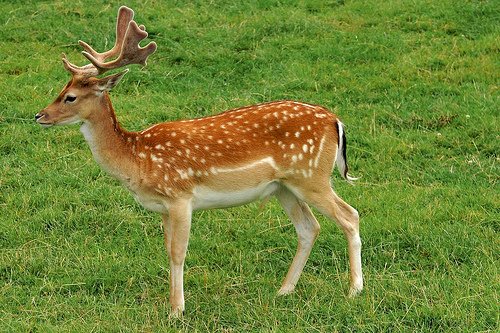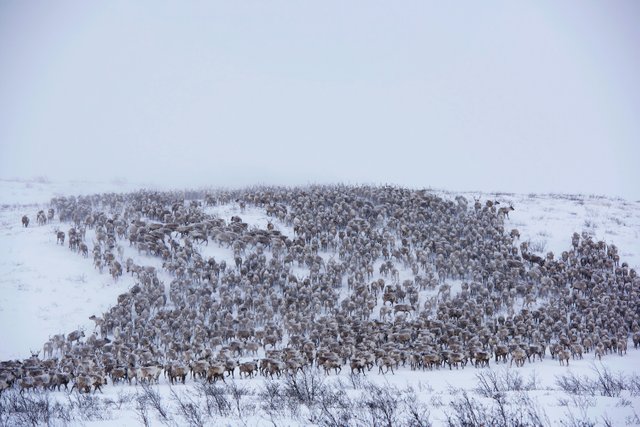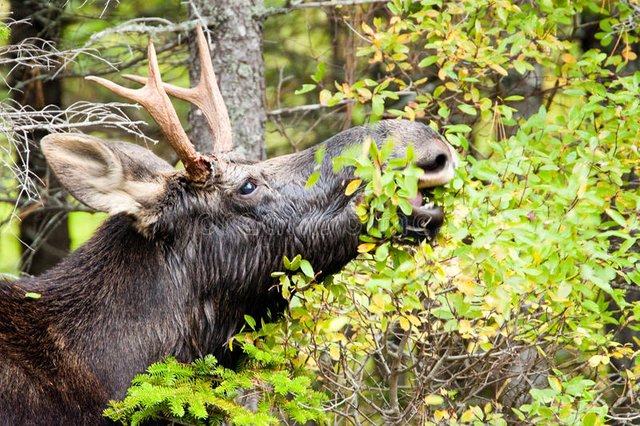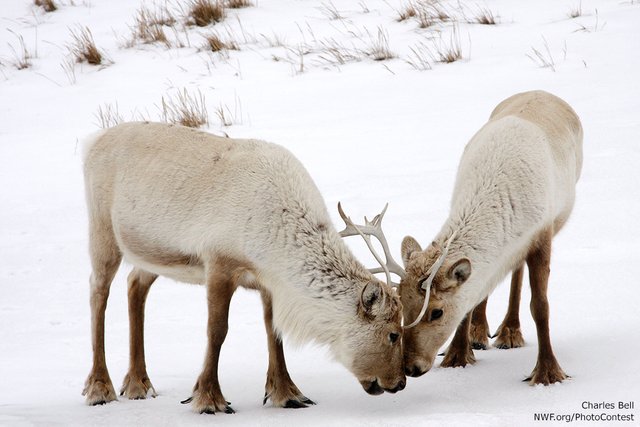The deer family
By now, we all know that Santa’s favorite reindeer – Rudolph – does NOT have a red nose. However, Rudolph and the rest of his reindeer friends have huge antlers on their heads, which is supposed to be a sure give-away that they are all male.
Deer are cloven-hoofed animals that have antlers on their heads, although usually it is only the males that have them. The antlers, which are usually branched, are shed and fresh ones grown each year. Then, each time a new set is regrown the antlers have a greater number of branches, so antlers are unlike the horns of cattle which are not shed each year.
Now we come to another of those exceptions to the rules which makes classifying animals so damn difficult: not all deer have antlers! Even so, they are still classified as deer because there are no other important differences in their anatomy.
The small musk deer of Asia have no antlers. Instead they have long upper canine teeth that form tusks. The musk deer use these in fighting.
The muntjac or barking deer, of south-east Asia, also has tusk-like canines, but it also has a pair of small antlers. The Chinese water deer has neither tusks nor antlers. When in danger it scuttles through grass like a rabbit and then drops flat on the ground out of sight. None of these deer is more than 60cm tall but they are not the smallest deer. The pudu of South America is even smaller. This is only 37cm high and has very tiny spikes for antlers.
The largest deer is the moose that lives in the marshy forests of North America. It is about 2,5m high. The male moose has enormous antlers spanning nearly 2m but here we come to a mix-up in names. In Europe a deer almost identical with the moose is known as an elk but in North America the name elk is given to a deer almost identical with the red deer of Europe and Asia. The animal known as the American elk is also called a wapiti. This is its Red Indian name.
Most deer are forest dwellers. They will eat grass but most of them prefer the leaves of bushes and shrubs. What is more, if they have only grass to eat they do not grow as large as those able to feed on leaves and their antlers do not grow as large.
Deer in the far north:
In Northern Europe and Asia lives the reindeer. This has been domesticated by the people living in these cold regions. The Lapps, for instance, used to depend on the reindeer for almost anything. They kept them in herds, milked the females, ate the flesh of the reindeer, used its hide for clothes and making their wigwam-like dwellings and used the living deer to pull their sleighs…sounds familiar???
When people from Europe settled in North America they found deer that looked like the reindeer except that they were bigger. The American Indians called these deer caribou.
Not only do reindeers and caribou look alike, they feed alike. In winter, when snow covers the ground, both scrape away the snow to eat the lichens, called reindeer moss. Reindeer and caribou are also unusual among deer because the females, as well as the males, have antlers.
A female roe deer stand alert on the edge of woodlands. If danger threatens, the deer will disappear swiftly and silently into the woods:
Fallow deer belong to Europe and south-west Asia. They used to be very numerous in the wild, but hunting and the clearance of woods and forests have reduced their number. The buck (male) is about 1m at the shoulder. The doe (female) is slightly smaller.

Twice a year caribou in Canada make a trek between summer and winter feeding grounds. Caribou are the North American equivalents of the reindeer in Europe. They are larger than reindeer and start breeding slightly earlier in the year.

A young bull moose browses on a snack:

Reindeer and caribou are well adapted to the arctic conditions of the areas where they live. They have thick coats and hoofs that splay out as they touch the ground, so that the feet do not sink into the snow.

Resources and extra reading:
Deer family | Moose | Reindeer | Caribou | Elk

Congratulations! This post has been upvoted from the communal account, @minnowsupport, by ghostgtr from the Minnow Support Project. It's a witness project run by aggroed, ausbitbank, teamsteem, theprophet0, someguy123, neoxian, followbtcnews, and netuoso. The goal is to help Steemit grow by supporting Minnows. Please find us at the Peace, Abundance, and Liberty Network (PALnet) Discord Channel. It's a completely public and open space to all members of the Steemit community who voluntarily choose to be there.
If you would like to delegate to the Minnow Support Project you can do so by clicking on the following links: 50SP, 100SP, 250SP, 500SP, 1000SP, 5000SP.
Be sure to leave at least 50SP undelegated on your account.
Nice post, The male reindeer in the wild naturally lose their antlers at the end of the rutting season (Late Autumn) as they no longer need them once they have bred. The females however, lose theirs in the Spring after they have given birth to compete for food over the winter months. This means that Santas Reindeer are either Female or they are Castrated males. The castrated males will keep their antlers until injected with Testosterone in the New Year and lose their antlers between March and May.
Only Santa knows the overall answer to this question but I would personally say they are castrated males as their antlers always appear to have no velvet on them in Christmas cards!